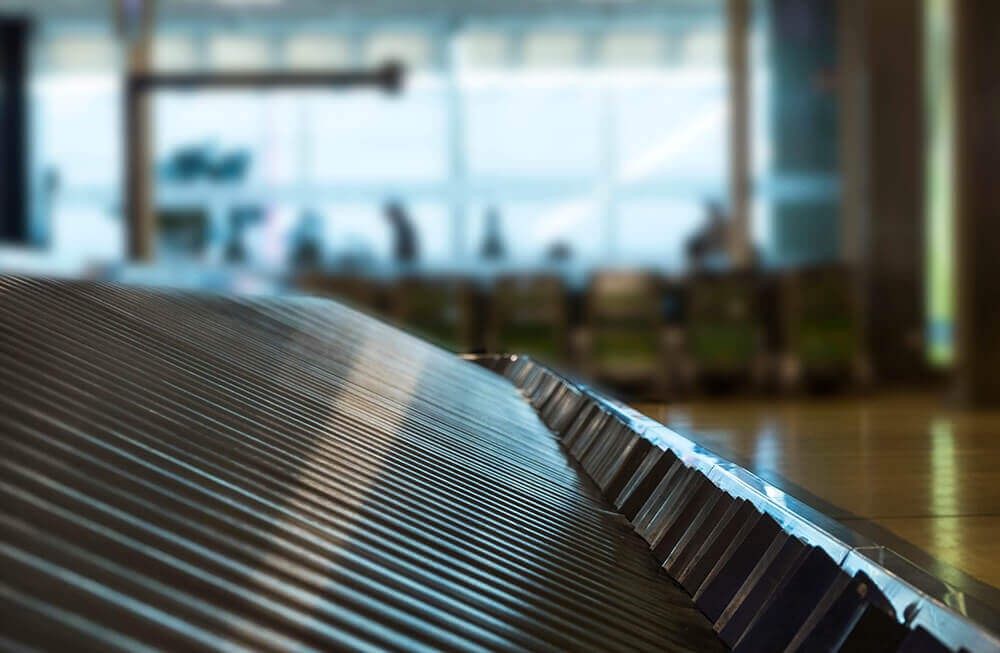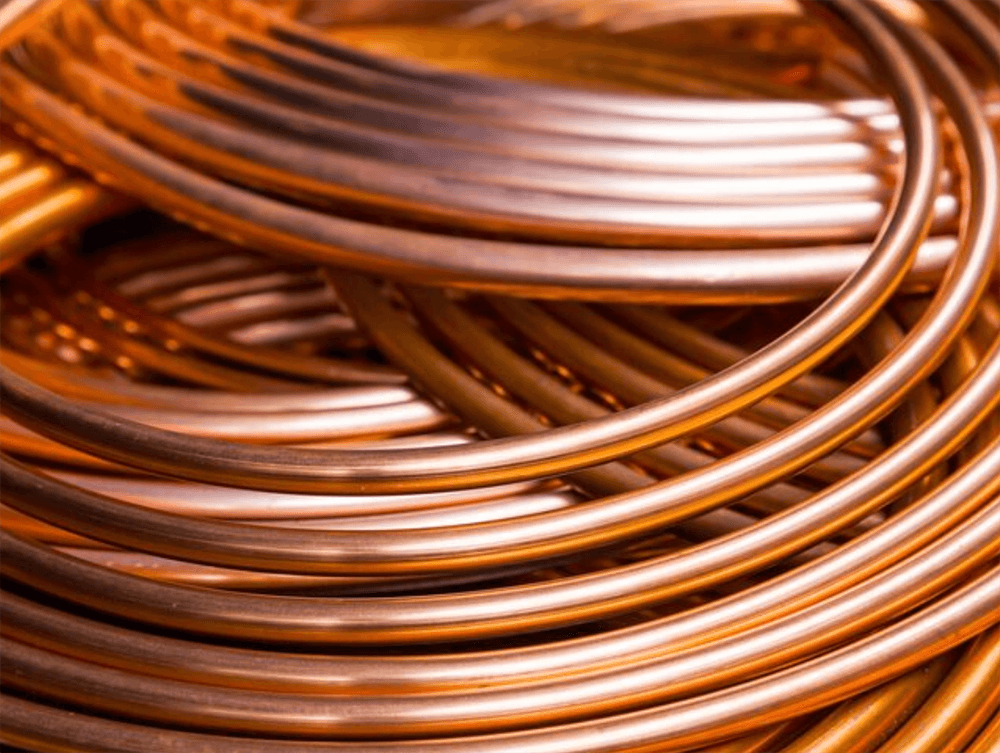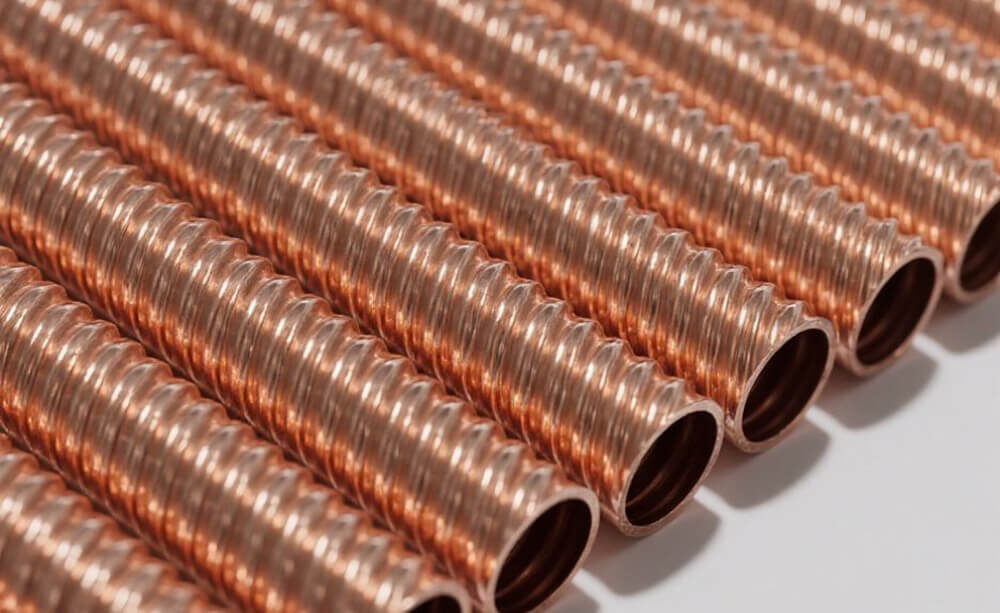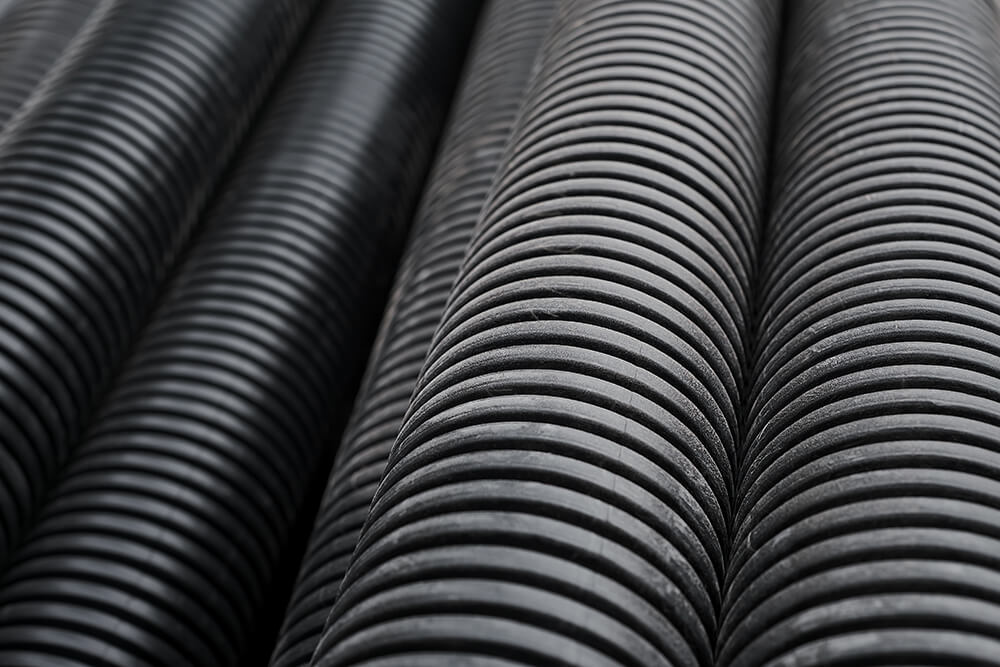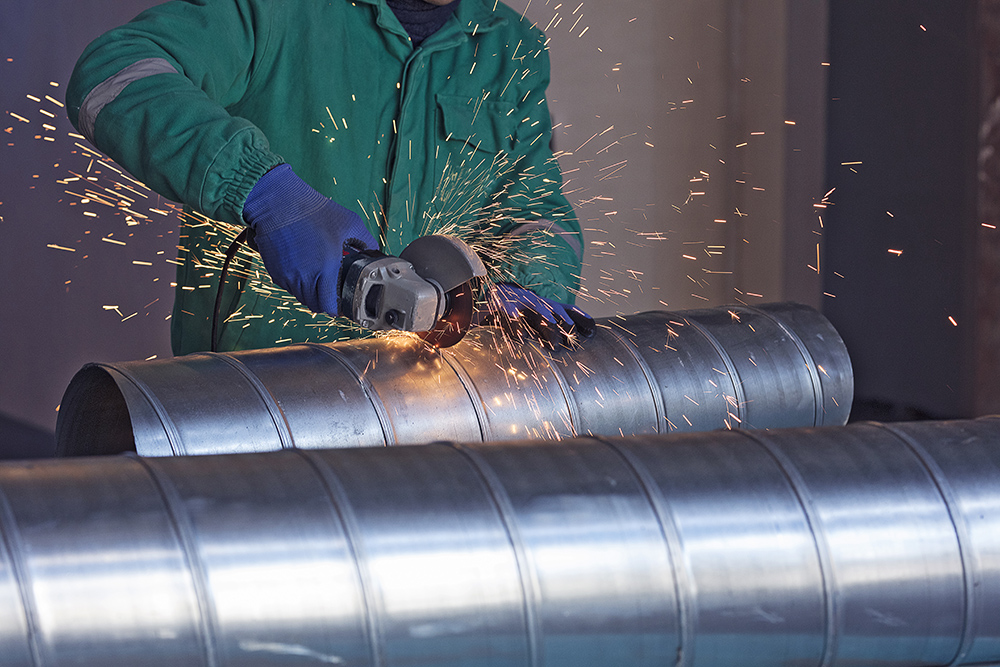The current finned heat exchanger labeling method to the size of the heat transfer area to label, most of the engineers for the heat exchanger chiller heat transfer to “heat transfer = heat transfer area × heat transfer coefficient × heat transfer temperature difference” to calculate, but different manufacturers because of the design, configuration is different, the same area of heat transfer heat exchanger heat transfer is not the same. Finned heat exchanger is mainly affected by the arrangement of heat transfer tubes, heat transfer tube materials and specifications, fin materials and specifications, circuit layout, liquid distribution, the design of the collector tube, airflow design, heat transfer area and other factors.
1.Heat transfer area
Heat exchange area is the area of heat exchange with the air. It mainly consists of the fins to remove the heat transfer tube through the tube area after the external surface area and the external surface area of the heat transfer tube composed of two parts, the larger the area for heat exchange, the more heat transfer can be generated.
2.The material and specifications of the heat exchanger tube
Because of the different thermal conductivity of different materials, the use of different materials heat exchanger tube heat exchanger natural heat transfer efficiency is different. At present, most finned heat exchangers use copper, aluminum and stainless steel as the heat exchanger coil, copper and aluminum are mainly used for Freon refrigeration systems, aluminum tubes are mainly used in ammonia refrigeration systems, stainless steel tubes are mainly used for carbon dioxide refrigeration systems. In terms of material thermal conductivity, copper has the highest thermal conductivity, aluminum tube is in the middle, and stainless steel is the lowest. At the same time, the diameter and thickness of the coil is also one of the factors affecting the amount of heat transfer, different specifications of the optimal length of the coil loop is different.
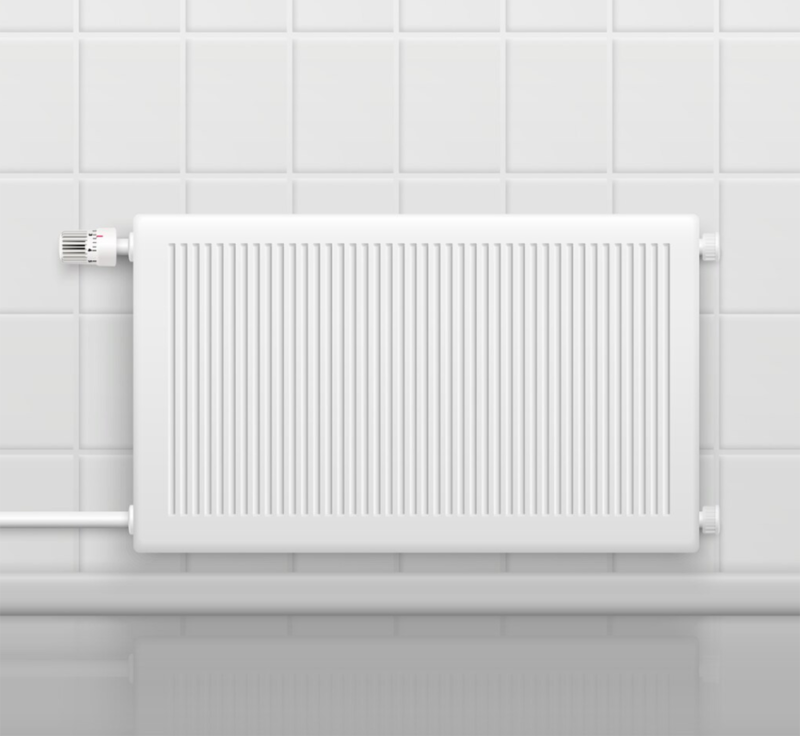
3. Arrangement of heat exchanger tube
At present, the arrangement of the chiller is arranged in fork row and square arrangement. Small and medium-sized chillers are mostly arranged in fork rows, large chillers are mostly arranged in square rows, and condensers are mostly arranged in fork rows. In the same heat transfer area, the same wind speed, the heat transfer efficiency per unit area of the heat exchanger using the fork arrangement is better than the square arrangement; but the fork arrangement, the pressure drop generated in the gas flow is greater than the square arrangement. In the case of using the same specification fan, the actual air volume of the heat exchanger with the fork row arrangement is smaller than that of the front row arrangement.
4.Circuit arrangement
For finned heat exchanger, especially in the refrigeration system, the refrigerant in the tube to go through the two-phase conversion zone and the subcooling and superheating zone. As the refrigerant in the two-phase area of the heat transfer coefficient is much higher than the subcooling and superheating area, so a reasonable layout of the circuit process, so that the refrigerant as far as possible in the two-phase area, you can improve the heat transfer heat exchanger.
5.The fin material and specifications
At present, the heat transfer fins are mainly made of aluminum, copper, stainless steel and other materials, copper fins have the best thermal conductivity, but the cost is too high, followed by aluminum fins, and stainless steel fins because of its excellent corrosion-resistant nature of the main application of the use of the more hostile environment. Different fin styles have different effects on the airflow and bring different amounts of heat transfer. As for the thickness of the fins, different thicknesses have different heat capacities. Generally speaking, the greater the thickness of the fins, the greater the amount of heat exchanged for the same area of the heat exchanger for a given amount of airflow. However, the thickness is too large for the airflow to produce a large pressure drop, resulting in a reduction in ventilation, which will make the heat exchanger reduced; while the thickness is too thin, due to the heat capacity is small, the heat exchanger will also be reduced. Therefore, when designing, the optimal value should be selected in order to maximize the heat transfer efficiency.
6. Liquid splitting situation
Especially for the use of direct expansion chiller, because the refrigerant liquid after throttling device, there will be a flash situation, into the gas-liquid mixed state of low temperature refrigerant. If the liquid separator design is not reasonable, can not make the gas-liquid fully mixed before liquid separation, there will be uneven liquid separation, and even “wheezing” phenomenon, uneven liquid separation leads to part of the circuit liquid supply is too much, can not be completely evaporated, part of the circuit liquid supply is too little, the refrigerant is overheated, the heat exchanger efficiency is low, and ultimately the whole heat exchanger can not reach the ideal heat exchange, and even the heat exchanger can not reach the ideal heat exchange, and even the heat exchanger can not reach the ideal heat exchange, and the heat exchange efficiency is low. Ultimately, the whole heat exchanger can not reach the ideal heat transfer, and even the loss of more than half of the heat transfer may occur.
7.The design of the collector tube
For finned heat exchanger, because of its existence of multiple circuits, the design of the collector tube is particularly important, individual manufacturers exist to reduce costs and reduce the diameter of the collector tube. Too thin collector tube will lead to too large a pressure drop in the pipeline, thereby reducing the heat transfer efficiency.
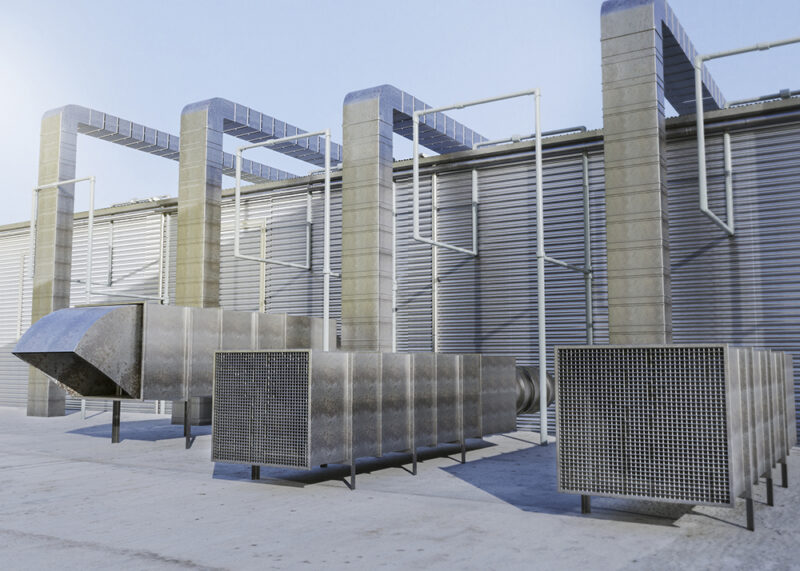
8.Airflow design
Airflow design is the first and most intuitive factor is the size of the equipment air volume. To life applications, for example, in our use of the same electric heating power of the hair dryer, large air volume of the hair dryer to dry hair faster than the small air volume of the hair dryer. The same applies to finned heat exchangers: as the airflow increases, so does the amount of heat exchanged. However, because the thermal conductivity of the heat exchanger is fixed, the air volume increased to a certain extent, the heat transfer will not have a significant increase. Excessive air volume will also lead to excessive fin wind speed, or even “blowing water” or even “blowing ice” situation, which will lead to a waste of electricity and may be the motor fan blade or even motor damage.
Next is the design of the heat exchanger internal static pressure box size, that is, the distance from the fan blade to the edge of the fins. If the static pressure box size is not enough, it will lead to uneven ventilation of the finned coil, loss of heat transfer.
Conclusion
Through the above analysis, can let us soberly realize that the heat transfer area is by no means the only factor that determines the finned heat transfer, not to mention the most important factor, the most important factor is the heat transfer efficiency. In the case of the same heat transfer area, the higher the heat transfer efficiency, the higher the heat transfer. To achieve the ideal amount of heat transfer, the first thing is to improve the heat transfer efficiency, and then only in the case of heat transfer efficiency can not be improved, and then through the increase in heat transfer area to achieve.
Compared with the vast majority of equipment manufacturers in the market to heat transfer area as the product selection, mountain business refrigeration company has always insisted on the use of heat transfer efficiency based on the heat transfer or cooling capacity as the selection criteria, which is to meet the user’s real refrigeration needs a step further, but also more accurate, so the mountain business refrigeration equipment is also more and more to show its high efficiency of the cooling or heat transfer effect.

